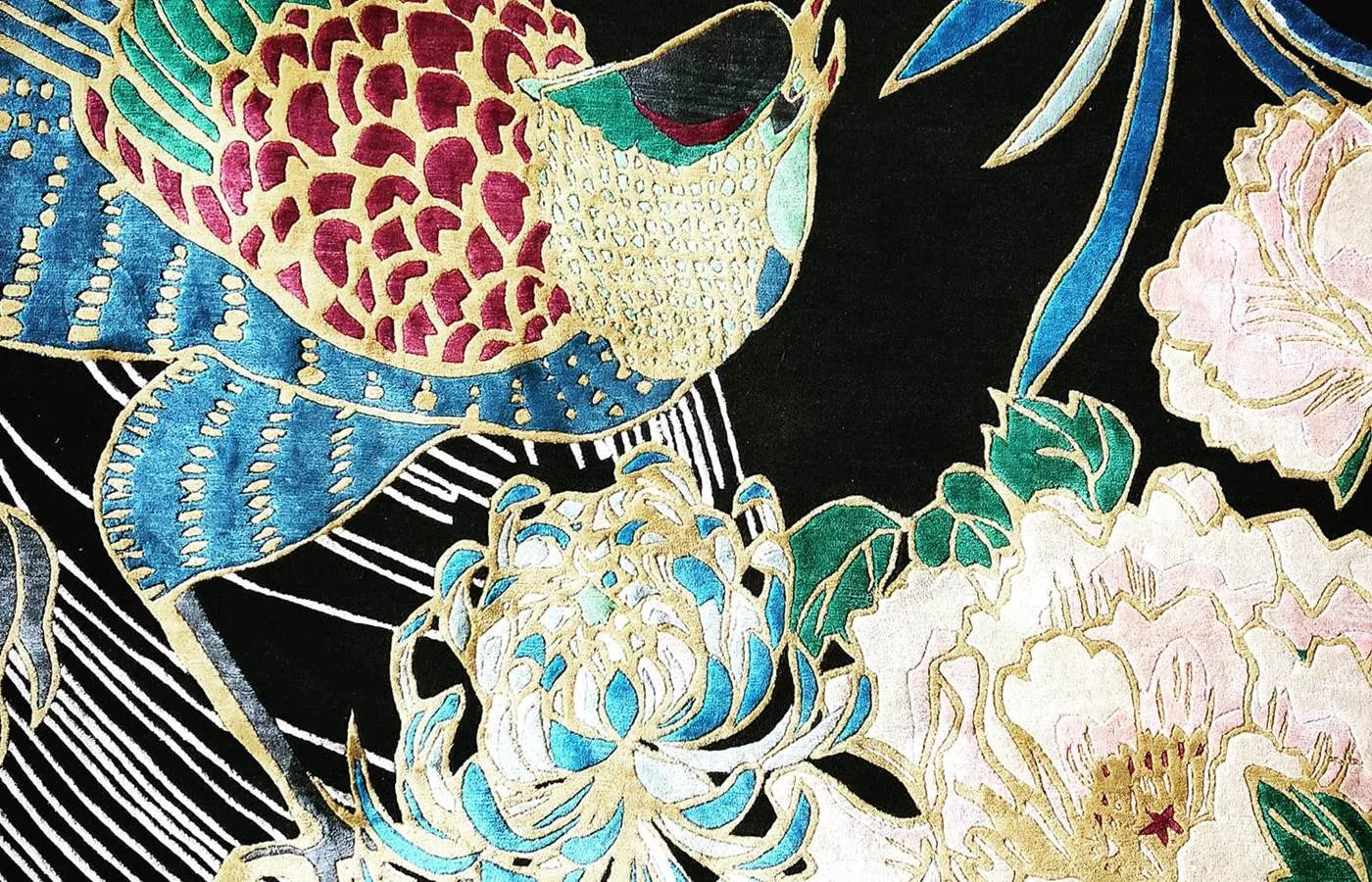Chinese philosophy provides the inspiration for much of my current work. From my perspective, it makes perfect sense. The philosophy focuses on the relationship between the various elements in nature (Wood, Water, Fire, Metal, Earth). Man is seen as a crucial component of this natural world and his ability to work with the flow of nature’s rhythms is believed to lead to optimal moral and physical health. This inspired my introduction to the philosophy through Feng Shui, when seeking to set up our first home for maximum well-being and good fortune. If you’ve never looked into Feng Shui, I suggest you do. It’s helped guide many of my decisions about my home setup, from colour selection to positioning of plants and mirrors. If in doubt, I always consult my compass!

Good Fortune and Cranes In Trees are quite the indulgence on my part and here I take a look at a selection of the symbols that inspired and feature in the designs….
The Dragon
The ultimate symbol of cosmic energy qi 气 and the most powerful symbol of good fortune. Ranked first among mythical beasts, it can bring rain to parched lands and thus represents abundance and relief. A dragon and phoenix (king of all winged creatures) symbolise the emperor and empress as well as marital bliss. The dragon is often used as an emblem of high rank and power on the robes of emperors and princes and on imperial art objects.

The Phoenix
The phoenix is the ‘king of birds’ and symbolises good fortune and opportunity as it appears only in times of peace and prosperity. In Chinese mythology, the phoenix is a benevolent bird since it does not harm insects, and each of its body parts represents one of the virtues – benevolence (ren 仁 ), righteousness (yi 義), propriety (li 礼), knowledge (zhi 智) and sincerity (xin 信).

Mountains
The Ginko Tree
For centuries, the ginkgo tree has been considered a symbol of hope and peace. The Ginkgo is really, really old. Originating from the time of the dinosaurs, it has unique features unlike any plant alive today. Botanists consider it a living fossil. At least 150 million years ago Ginkgo grew all across the Northern Hemisphere, but was virtually wiped out in a major extinction event following the last ice age. Luckily, a few specimens survived in China. According to legend, Chinese and Tibetan monks recognised the value of this rare tree and began to cultivate it. Ginkgos are revered throughout Asia, where the tree has come to symbolise longevity and enlightenment.

The Peacock
Peacocks feature regularly on my rugs! I’m naturally drawn to their beauty and dignity – their tail with 100 eyes, magnificent colours and extraordinary detail.

Pine Trees
The Crane
Also a symbol of longevity because it loves a long life and its white feathers represent old age. It also ranks highly in the bird world due to its size, a crane in flight.

The Colours
Black represents water
Red represents fire. Chinese people believe that red can be a sign of joy and fortune.
Gold is a symbol of earth. Very important in Chinese symbolism – represents glory, wisdom, harmony, happiness and culture.
Pink for love…..of course.
Wx


